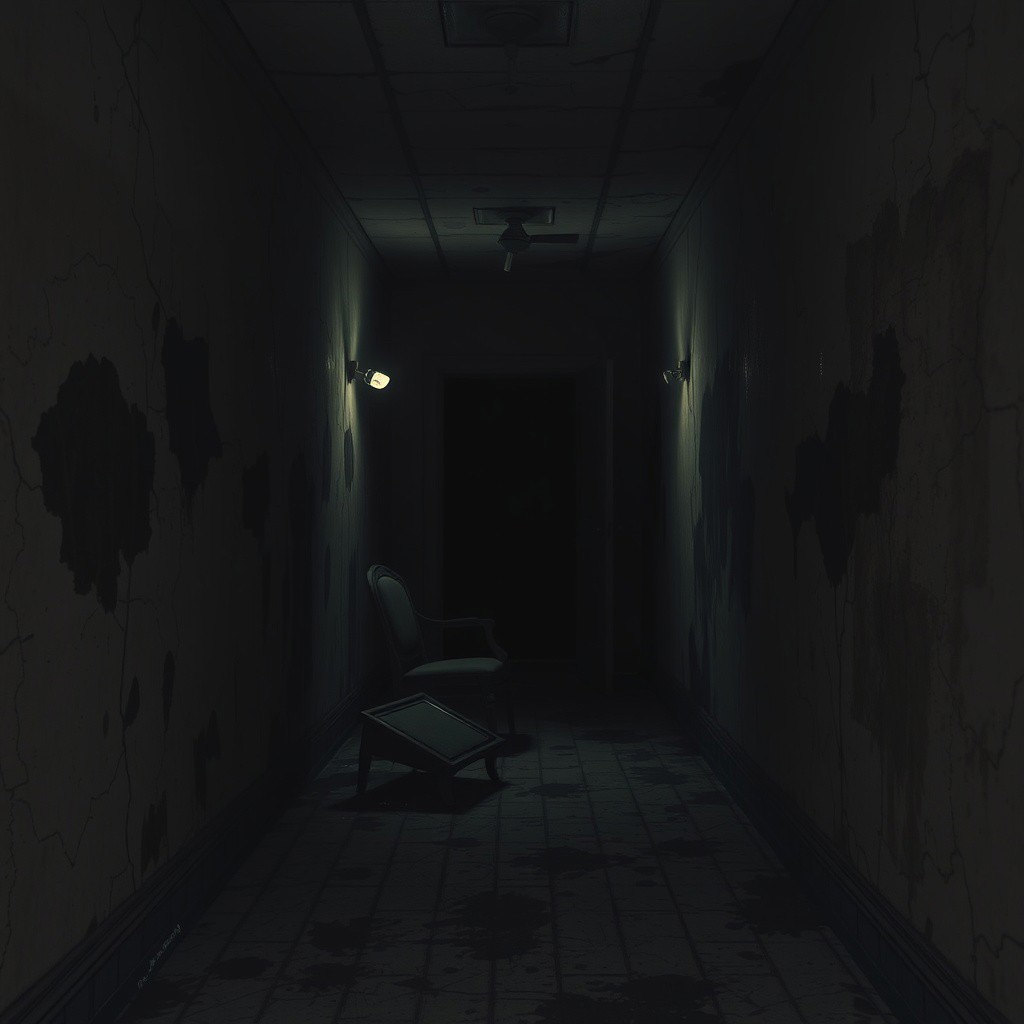A haunting, abandoned corridor in an old building, dimly lit by flickering, malfunctioning lights. The walls are cracked, peeling, and stained with dark, uneven patches that give the impression of something decayed. The floor is covered with cracked tiles and faded, torn carpet, but some areas are unnervingly smooth, as though worn down by something unknown. At the end of the corridor, a door stands ajar, revealing only darkness beyond, an oppressive void that seems to swallow up the light. Faint, distorted shadows seem to stretch unnaturally along the walls, casting eerie, warped shapes. The air is thick with an almost palpable tension, as if something might emerge from the darkness at any moment, yet there’s no sign of life. A few abandoned objects—an overturned chair, a broken picture frame—lie scattered across the floor, abandoned carelessly, giving the room the feeling of a place left in haste. The atmosphere feels cold, suffocating, and wrong. There’s no noise, no movement, just an overwhelming sense of something being off, as though the space itself is alive, waiting. The entire scene is bathed in dull, muted tones, with dark corners that seem to swallow up the light, giving it an overwhelming sense of emptiness and a deeply unsettling feeling of being watched.
